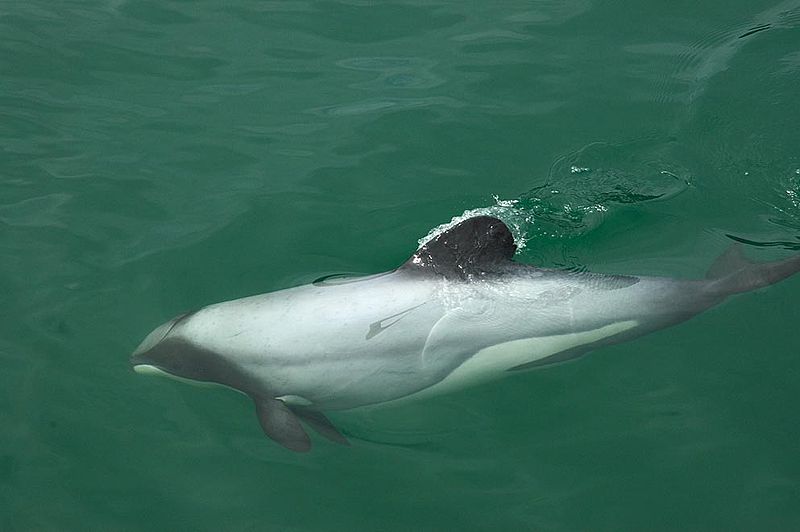
Photo credit: James Shook
1. Cephalorhyncus sounds like a sneeze but is actually the genus that includes four small coastal dolphins: Hector’s, Commerson’s, Heaviside’s and Chilean.
2. All four of the dolphins are mistaken for porpoises because they have nicely sloped heads instead of the more common dolphin beak.
3. Based on DNA studies, Cephalorhyncus dolphins share the same ancestor Lissodelphinine, apparently some dolphin creature of years past. (The Encyclopedia of Marine Mammals doesn’t go into any details.)
4. Hector’s dolphins are the smallest dolphins at only 4.5 feet long, while Heaveside’s and Chilean dolphins reach more than five feet. Overall, a small group of dolphins.
5. Dinner options include several species of fish, but Heaveside’s also eat octopus and some of the Hector’s dolphins eat a lot of squid.
6. Cephalorhyncus dolphins are only found in the Southern Hemisphere and stay close to shore, mostly in water that is only 300 feet deep. They are often seen surfing the waves along the shore.
7. Each dolphin lives in a very different part of the world: Hector’s dolphins around New Zealand, Commerson’s dolphins along the east coast of South America’s southern tip and the Kerguelen Islands, Heaviside’s dolphins along the western coast of South Africa and Chilean dolphins of course live along Chile’s coast.
8. A couple of the dolphins sport really cool coloring. The Heaviside’s dolphin has a black head and black dorsal fin and flukes with all white in between, kind of panda style. The Hector’s dolphin (in the photo) has several shades of gray and a cool white pattern underneath.
9. All four dolphins have been hunted for food or for bait, according to the Encyclopedia of Marine Mammals. What a waste, using a dolphin as bait, that’s just tragic. All four are also victims of gillnet fishing and getting caught in other types of fishing gear as bycatch.
10. One population of Hector’s dolphins is severely endangered with only 111 dolphins left. This is a big problem because Hector’s dolphins don’t live very long and females only give birth every two to four years. Will they make it? Only if protections enacted by New Zealand’s government work, but it may be too little too late. Only time will tell.
Leave a Reply